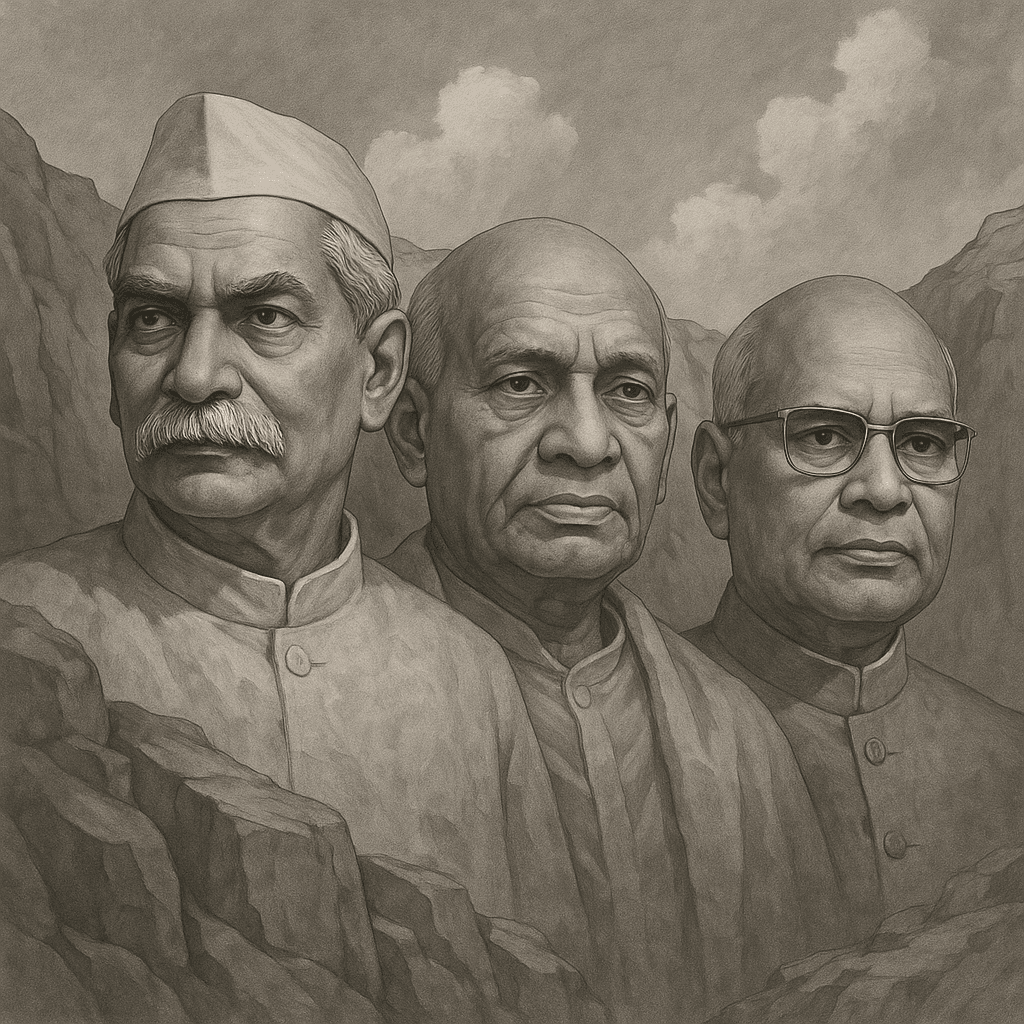Small-Town Briefs and Lincolnian Echoes:
India’s Many Lincolns
The Small Town Lawyers.
Preface: Redefining the Lincoln Analogy
While the United States reveres Abraham Lincoln—the rural, small town lawyer who rose to historic greatness—India has produced not just one, but multiple ‘Lincolns’. This article reframes the narrative and celebrates Indian leaders whose modest beginnings in the corridors of law, meritocratic ascent, and far-reaching public service mirror—and in some ways, surpass—the Lincolnian ideal.
The Limits of Popular Narratives
Mainstream commentary and AI-driven searches often misattribute the “Indian Lincoln” title to contemporary metropolitan luminaries such as Ujjwal Nikam, J. Sai Deepak, Indira Jaising, Ram Jethmalani, and Fali Nariman. While each is accomplished, their rise was tied to legal careers launched from urban power centers, institutional support, influential political, ideological, or ethnic group backing, and consistent media amplification.
Their journeys, shaped by visibility and networked privilege, diverge sharply from the Lincolnian model of organic, small-town, and merit-based ascent to national office.
Even giants like Mahatma Gandhi and B.R. Ambedkar—though trained in law and monumental in impact—do not fit this archetype:
- Gandhi practiced law briefly and unsuccessfully in Bombay and a small town, Rajkot as per his own biography. He moved to South Africa but was mainly doing liasoning for his clients with the British Government. He renounced advocacy to lead mass movements; he did not pursue formal constitutional office, nor was his ascent shaped by sustained courtroom practice.
- Ambedkar was a brilliant legal mind, constitutional architect, and accomplished yet unsung economist, but his contributions emerged from scholarship, activism, and policy—not from long years in grassroots advocacy or the daily legal grind.
India’s True Lincolns: Ground-Up Legal Luminaries
The true Indian Lincolns are those who rose from the courts of small towns and humble origins to the very summit of the republic, leaving an indelible mark on Indian democracy. Their journeys capture the spirit of Lincoln: tireless courtroom advocacy, uncompromising integrity, and a climb from the grassroots by merit alone.
Dr. Rajendra Prasad: Bihar’s Advocate Who Became India’s First President
Born in a small village in Bihar, Dr. Rajendra Prasad began his legal practice in the district courts of Bengal and Bihar, known for his humility, commitment to justice, and service to the poor. He gained a reputation as a principled and effective advocate—qualities that made him a trusted ally in India’s freedom movement.
Prasad played a pivotal part in organizing legal responses to colonial repression and used his courtroom skills to advance the cause of nationhood. He emerged as the President of the Constituent Assembly, guiding the drafting of the Indian Constitution with consensus and moral clarity. In 1950, he became the first President of India: not only the republic’s highest constitutional office but also its enduring symbol of unity, humility, and service.
Sardar Vallabhbhai Patel: The Barrister Who United a Nation
Sardar Patel began his career as a barrister in the small-town setting of Godhra and then Ahmedabad, practicing civil and criminal law with exceptional acumen. He was renowned for his rigorous preparation, ethical standards, and ability to win the trust of ordinary clients—traits that soon extended to organizational and political work.
His courtroom skills quickly translated to public leadership: he organized successful peasant movements, most notably the Bardoli Satyagraha, and went on to play a decisive role as India’s first Deputy Prime Minister and Home Minister. Tasked with integrating over 500 princely states into the Union of India, Patel’s steadfastness, courage, and legal mind made him the “Iron Man of India”—an architect whose work ensured the republic’s very existence. The world’s tallest statute “The Statute of Unity” in Gujarat is dedicated to Sardar Patel.
Ram Nath Kovind: From Rural Advocate to Reform Architect
Ram Nath Kovind’s life began in Paraunkh, a small village in rural helmet of Kanpur, Uttar Pradesh. Rising from humble beginnings, he built his legal career as an advocate in Kanpur and Delhi, focusing on social justice and representing the underprivileged. He provided extensive pro bono assistance, especially to marginalized communities—a quiet, merit-based journey that bypassed elite lobbies and political patronage.
After years of legal and public service, Kovind’s and a brief stint as Governor of Bihar, his ascent culminated with his election as the 14th President of India. Yet his legacy is destined to stretch far beyond his presidency. In 2023, Kovind was appointed Chairman of the High-Level Committee on One Nation, One Election. Under his leadership, the committee undertook one of India’s most wide-ranging exercises in constitutional consultation—hearing from political parties, experts, and tens of thousands of citizens—before submitting an ambitious roadmap for synchronizing elections nationwide.
This potential reform, if implemented, will bring about a fundamental shift in India’s democratic architecture, cementing Kovind’s place in history as more than a ceremonial head of state: as a reformer and architect whose impact—like Lincoln and few others—shapes the nation’s future as well.
Conclusion: India’s Plural Lincolnian Legacy
The journey from small-town advocacy to the heights of public trust is not the exception in India—it is a recurring legacy. Dr. Rajendra Prasad, Sardar Vallabhbhai Patel, and Ram Nath Kovind demonstrate that the ideals that made Lincoln iconic are alive in India’s story, many times over.
Recognizing these leaders reminds us that true legal and political greatness is forged in the quiet diligence of grassroots service, not the spotlight of media or the corridors of urban power.
See also:
